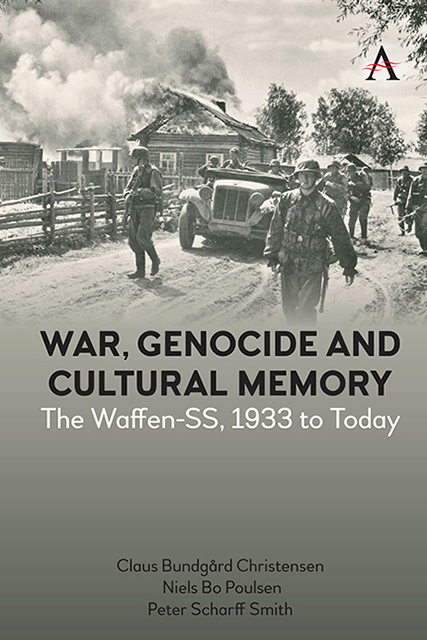Book contents
- Frontmatter
- Contents
- About the Authors
- Foreword
- Chapter One Introduction
- Part I The Organisational and Military History of the Waffen-SS
- Part II Ideology, Discipline and Punishment in the Waffen-SS
- Part III A European Nazi Army: Foreigners in the Waffen-SS
- Part IV Soldiers and War Criminals
- Part V Waffen-SS After 1945
- Epilogue The Nazi’s European Soldiers
- Appendix
- List of Abbreviations
- Bibliography
- Index
Chapter One - Introduction
Published online by Cambridge University Press: 08 June 2023
- Frontmatter
- Contents
- About the Authors
- Foreword
- Chapter One Introduction
- Part I The Organisational and Military History of the Waffen-SS
- Part II Ideology, Discipline and Punishment in the Waffen-SS
- Part III A European Nazi Army: Foreigners in the Waffen-SS
- Part IV Soldiers and War Criminals
- Part V Waffen-SS After 1945
- Epilogue The Nazi’s European Soldiers
- Appendix
- List of Abbreviations
- Bibliography
- Index
Summary
One of the most astonishing paradoxes in modern military history is the fact that, during the Second World War, the extreme racist SS organisation engendered an army, which was possibly the most multi-ethnic and transnational army that the twentieth century ever witnessed. This was brought about by the establishment of a military branch of the SS, the Waffen-SS. During its existence, it expanded from a modest bodyguard at Hitler's disposal to a mass army through whose ranks passed more than a million men. Until the outbreak of war, the SS maintained high standards as to personnel, who were all volunteers. Not only did they have to meet tough physical and racial demands; by joining, they also entered a Nazi order of warriors demanding absolute faith in Hitler, unconditional subordination and profound ideological dedication as the pillars of their martial calling.
The head of the SS, the Reichsfu?hrer-SS Heinrich Himmler, envisaged an e?lite force of devoted Nazis, who would alternate between active duty in the field and other kinds of SS activities. They were not only to be soldiers but also role models leading a life as wholly dedicated SS men. They were to let their identity as members of the ‘order’ permeate all their doings including choice of spouse, reproduction, interior decoration of their homes, and celebration of red-letter days. Himmler hoped to create an elite of committed Nazis, welded together in a loyal brotherhood and hardened through war into merciless individuals, who would pitilessly annihilate the Third Reich's real and alleged enemies; be they hostile troops, Jews, mentally ill or any other so-called sub-humans.
While, until the outbreak of war, this order remained relatively homogeneous, the situation changed markedly during the war. Now, the SS began to moderate the demands on race and physical capability, introduced conscription and started to recruit from all over Europe. With these changes, the SS got new recruits, for example, from Norway, who were often as ideologically zealous as were the original German members. However, men who merely wished to avoid forced labour or were pressured into signing up also joined the ranks – individuals, who might not have heard of the SS before, now saw themselves in the uniform of this organisation. Additionally, there were hundreds of thousands of recruits from ethnic groups, whom the SS would never have admitted before the war.
- Type
- Chapter
- Information
- War, Genocide and Cultural MemoryThe Waffen-SS, 1933 to Today, pp. 1 - 6Publisher: Anthem PressPrint publication year: 2022

